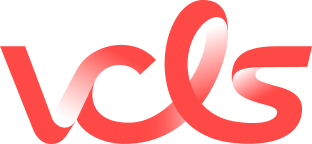The regulatory challenge for determining status between medical devices and cosmetic products with borderline claims – Part 2

Published on: Oct 20th, 2023
In the Part 1 of the blog post, we explored the regulations relating to medical devices and cosmetic products in the EU and US. In this part, we will now look deeper into claims and its application in case studies, as well as noting the regulatory situation in Great Britain.
The specific case of Medical Devices with an aesthetic purpose
While medical devices are generally intended for medical purposes, some products without a medical purpose may be regulated under the same principles.
In the EU, the MDR has scope increased to include “products without an intended medical purpose”. They are described in Annex XVI section of the MDR, and do not claim to have a medical purpose but share similar risk profiles and technological features as products which are already regulated as medical devices. They are therefore regulated under the same principles. The Annex XVI products are divided into 6 groups and range from surgically invasive body modification devices to liposuction equipment. These products are expected to comply with common specifications, that include addressing risk management and safety requirements demonstrated by Annex XVI products.
Therefore, it is necessary to understand whether an aesthetic product bears characteristics where they could qualify under Annex XVI scope of medical devices. There is no similar concept of Annex XVI products in the US.
The line between “cosmetic” and “medical” claims
Borderline suggests that it is not clear from the outset where a particular product falls with regards to the regulatory framework.
The EU has issued specific guidance documents that can be considered in that matter, including those provided by the Medical Device Coordination Group (MDCG), to assist manufacturers, notified bodies and regulatory authorities in determining when the medical device regulatory pathway should be followed. They offer a structured approach to decision-making process, ensuring adherence to safety and compliance standards in the EU market. For example, the MDCG 2022-5 ‘Guidance on borderline between medical devices and medicinal products under Regulation (EU) 2017/745 on medical devices’ does not provide specific insights into ‘claims’ definition, it does point out the importance of manufacturer’s product claims in determining qualification, and indicating that claims are instrumental in identifying the principle intended action and mode of action, which are also other key criteria in qualification. The guidance also gives examples of products and provides further detail on how to use the regulatory rules and requirements to determine the qualification of a product.
Independently of the MDGC, a dedicated European Commission publication, titled the “Manual of the Working Group on Cosmetic Products (Sub-Group on Borderline Products) on the Scope of Application of the Cosmetics Regulation (EC) No 1223/2009 (Art. 2(1)(A))”, provides practical examples for differentiating between cosmetic products and other products such as medical devices.
To give an example, this working group’s manual suggests that the claims made on skin-peeling products may be regarded as cosmetic (e.g. cleansing the skin) or therapeutic in other cases, to restore, correct or modify physiological functions of the skin (e.g. removal of scar tissue). The claims being made for the skin peeling product, as well as the characteristics, are instrumental to determine the appropriate regulatory qualification.
Another example demonstrates the importance of claims through mouthwashes and dental gels. If the primary purpose is to mainly keep them in good condition, they may still be considered a cosmetic product (subject to other qualification criteria) even if there is secondary “antimicrobial” claim accompanying the product. One recommendation for manufacturers would be to use guidance documents related to relevant products alongside legislation, to understand and apply the thinking process when determining qualification of their products, as they might find examples that allow like for like comparisons.
However, manufacturers must also be mindful of individual EU Member States’ own national recommendations on this topic. France’s Ministry of Economy, Finance and Industrial and Digital Sovereignty has published a tool that can be used to identify which claims are considered nutritional, therapeutic or cosmetic. Claiming a role in skin health of tea (Camelia sinensis) by “helping protect against UV-induced erythema”. Since the protection is provided from skin condition relating to a disease or injury, it is clear why claiming this specific function would be a therapeutic claim. In another scenario, claims on coriander (Coriandrum sativum) are also proposed for an effect on skin, by “keeping the skin fresh”. In this case, maintenance of skin “freshness” is not a medical need and more of a beauty claim. These two examples illustrate the need to delve deeper into the claims as the extra layer of detail provides more information on whether the function may be pathological, thus impacting the qualification.
In the US, FDA has provided recommendations specific to certain type of technologies and applications. For example, the FDA has published a guidance document for information to be included in a premarket submission for powered muscle stimulator devices.
These guidance documents may be valuable tools to understand what extent of claims may be made on a specific product and the regulatory risks associated with the proposed status. It should however be kept in mind that, in both EU and US, claims are always assessed on a case-by-case basis and in the context of a specific product, interactions with regulatory authorities may be necessary to ensure the appropriateness of targeted claims under the anticipated status.
Case study: Microneedling
Microneedling is a minimally invasive cosmetic procedure that involves controlled skin punctures by small needles.
In the EU, the medical or cosmetic status of a microneedling device will be impacted by claims i.e. therapeutic if intend to treat a medical condition, or cosmetic if just impacts appearance. Microneedling products would be viewed as cosmetic products if the claim addresses appearance without therapeutic benefits, e.g. microneedling products with “healing the skin” claims may not be considered cosmetics, however claims of “cleaning” the skin, “changing its appearance” and “keeping it in good condition” may. A “skin peeling” claim may be acceptable as cosmetic under certain circumstances, in particular when this claim is limited to an action to remove isolated cells or the top layers of the stratum corneum and not expected to significantly impact the normal skin physiology and barrier function (not exposing or removing the deeper layers of the stratum corneum). Anti-wrinkles claims would generally be suitable for cosmetics as far as no effect on restoring, correcting or modifying the skin’s physiological functions are involved.
FDA guidance for regulatory considerations for microneedling products provides specific details as it indicates that treatment of scars, acne, cellulite and alopecia, wrinkles are examples of claims that would generally fall under the regulation of medical devices. So goes for claims related to stimulating collagen production and angiogenesis, or promoting wound healing. Here, the intended purpose to treat thus indicating a disease or disorder, and for treatment to affect structure or function of the body, would qualify the microneedling to be regulated as a medical device.
In contrast, microneedling products facilitating exfoliation of skin, i.e. via disruption or removal of the stratum corneum, or giving it a smoother or luminous look and feel would not be regarded as therapeutic claims.
Both EU and US regulatory framework place importance on the claims made by the manufacturer to help qualify microneedling devices as medical devices or cosmetic products. While the guidance for the US market provides more detailed examples for qualification of microneedling products, principles of suitability of microneedling claims under the medical device or cosmetic frameworks present similarities, e.g. allowing skin exfoliation claims under a cosmetic status as long as this claim relates to the most superficial layers of the skin. In both jurisdictions factors other than claims such as depth of skin penetration by the needles, or intended users may change the qualification to medical devices.
Conclusion
The regulatory challenge for aesthetic devices with borderline medical claims remains relatively new but fast-growing to require regular updates of guidelines to help interpret the different regulations. Although this blogpost focuses on product claims, it is by no means the only parameter used to qualify a product. Principle and ancillary modes of action, administration route and composition are some of the characteristics that inform qualification decision-making. By understanding the key points between different regulatory frameworks for medical devices/cosmetics, and others such as drugs/cosmetics or foods/drugs, developers should be aware that careful assessment of the product and its associated claims is crucial to apply the appropriate regulation and ensure compliance for consumer safety.
Developers should be mindful of this approach to look for finer details between different jurisdictions as well as since there are differentiations in legislations to suit the needs of the local market and their regulatory infrastructure. With the UK in the process of writing their own future medical device regulations, one key area is to look for UK’s approach to regulating non-medical purpose products in comparison to Annex XVI in the EU.
A manufacturer must start their journey for navigating the regulatory pathway with the knowledge that there may be different rules in different geographies and that multiple regulations exist that may be potentially relevant to their products. However, there are regulatory definitions to help manufacturers overcome any challenges in interpretation and establish compliance, as well as the possibility of interaction with regulators on complex cases.
References:

Questions? Get the answer by our expert team
No two product developments are the same, talk to our experts about your development challenges and we will provide your actional recommendations.


